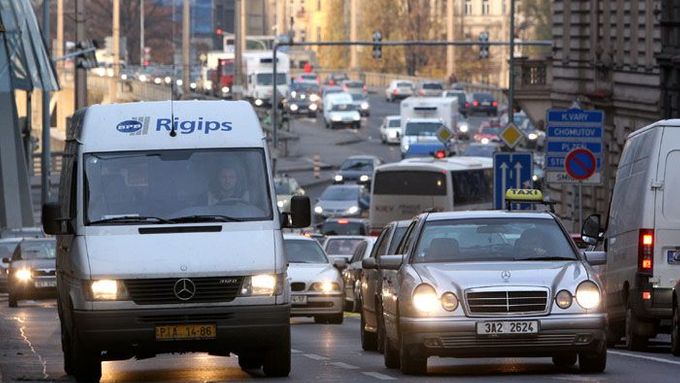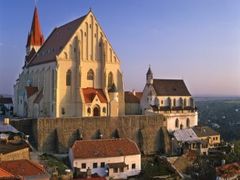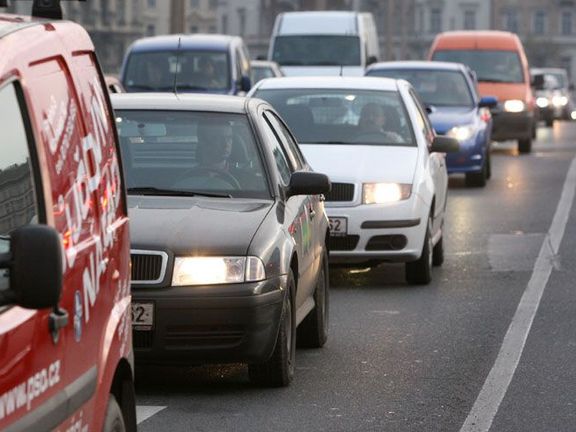Pilsen/Brno/Znojmo/Ostrava - The first working day of the new year came as a surprise for motorists in Brno and Znojmo centres.
A new line of public transportation began its operation in Znojmo on that day. An eco-friendly bus transports passengers from the parking lot in Náměstí Svobody (Freedom Square) to the city centre, for just five Czech crowns. The price is twice cheaper than the normal fare.
In Brno, mechanical blocking posts were automatically erected in 18 streets at 9AM. They get down again at 5PM, preventing drivers from getting to the centre during the day. This is now possible only via Masarykova and Rašínova streets.
City representatives use these means to limit the number of cars in historic centres. The centre of Znojmo, a medival town in the south of Moravia, for instance, sees some 9,000 cars every day.
Cheap outskirts, costly centres
The Znojmo system of cheap "catching" parking lots linked to public transportation lines is called P+R, or "Park and ride", a system well known in the West, but still rather novel here. It has worked well in Prague which already has 16 such parking lots.
The cities of Ostrava and Plzeň (Pilsen) now want to introduce the P+R system, too. For a start, the parking fees in the centre and on the outskirts of Plzeň have been differentiated. If you leave your car on the outskirts, you will pay less than those who must park in the centre.
"Some P+R parking lots are already prepared like the one near the Tesco store, opposite the Central cemetery, which lies by the main thoroughfare from Prague," said Petr Raška from Plzeň's Department of Concept and Development. The other P+R parking lots are envisaged in the zoning plan.
The councillors are now trying to figure out how to further encourage drivers to park on the outskirts.
"The organization of parking should be improved using electronic guiding boards that will inform drivers on the number of vacant places in the parking lots and times of departures of lines going to the centre. The receipt for the parking fee will also serve as a round-trip ticket," Raška said.
Ostrava to jump on the wagon
The P+R system should also be introduced in Ostrava this spring. "We're preparing parking lots linked to the public transportation," said Jiří Tichý from the Department of Transportation of Ostrava City Council.
"Long-term ticket holders will be able to park here under very favourable conditions, and day-long parking receipts will serve as a public transportation ticket. We have parking lots ready near most thoroughfares leading to the city. Only on the northern side they still must be built," Tichý added.
Long-term parking in the central part of Ostrava is reserved for people who live or work here; shoppers or office visitors may park here only temporarily.
New blocks on the block
Brno City Council has not contemplated building the P+R parking lots so far.
"We aren't planning neither the so-called catching lots or any kind of a toll system at the entrance to the centre. Instead, we are building parking houses," said Ladislav Macek, Brno mayor's deputy for technical affairs.
The first "parking house" was built near Moravské náměstí (Moravian Square) two years ago. Other two are in the project planning phase: one should be built next to the New Town Hall, the other near Janáček's Theatre.
However, the introduction of the automatic blocking system does mean some restriction on passage through the city centre.
The system, which was put into operation earlier this week, consists of several electromotor-driven posts that block the entrance to the city centre from 17 streets, all except Masarykova and Rašínova streets.
The posts are automatically erected at 9AM and disappear at 5PM. Brno policemen and transportation dispatchers can also manipulate with them in emergency situations.










